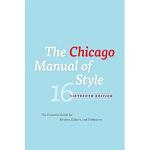Run-In Versus Indented Indexes
This is the reprint of a blog posting that was originally printed on September 27, 2010.
The Chicago Manual of Style describes two index formats that publishers use: run-in and indented. In run-in style, the subentries follow one another without each one starting a new line. In indented style, each subentry begins a new line and is indented (usually one em). The Chicago Manual of Style gives further specifics for each case.
The Chicago Manual of Style and many other scholarly publishers generally prefer run-in style because it requires less space. It works best, however, when there is only one level of subhead. However, the book itself, The Chicago Manual of Style, has an index in indented style. Indented style is usually preferred in scientific works and reference works. It is particularly useful where sub-subentries are required.
Each publishing house usually has its own indexing style guidelines, specifying which index format to use for its books. This format is selected based on space considerations or on the material, since a work with a lot of scientific terminology would be easier to read in indented format.
For more information on run-in or indented indexes, refer to The Chicago Manual of Style. For more information about the services provided by the author of this blog, see the Stellar Searches LLC website, http://www.stellarsearches.com
